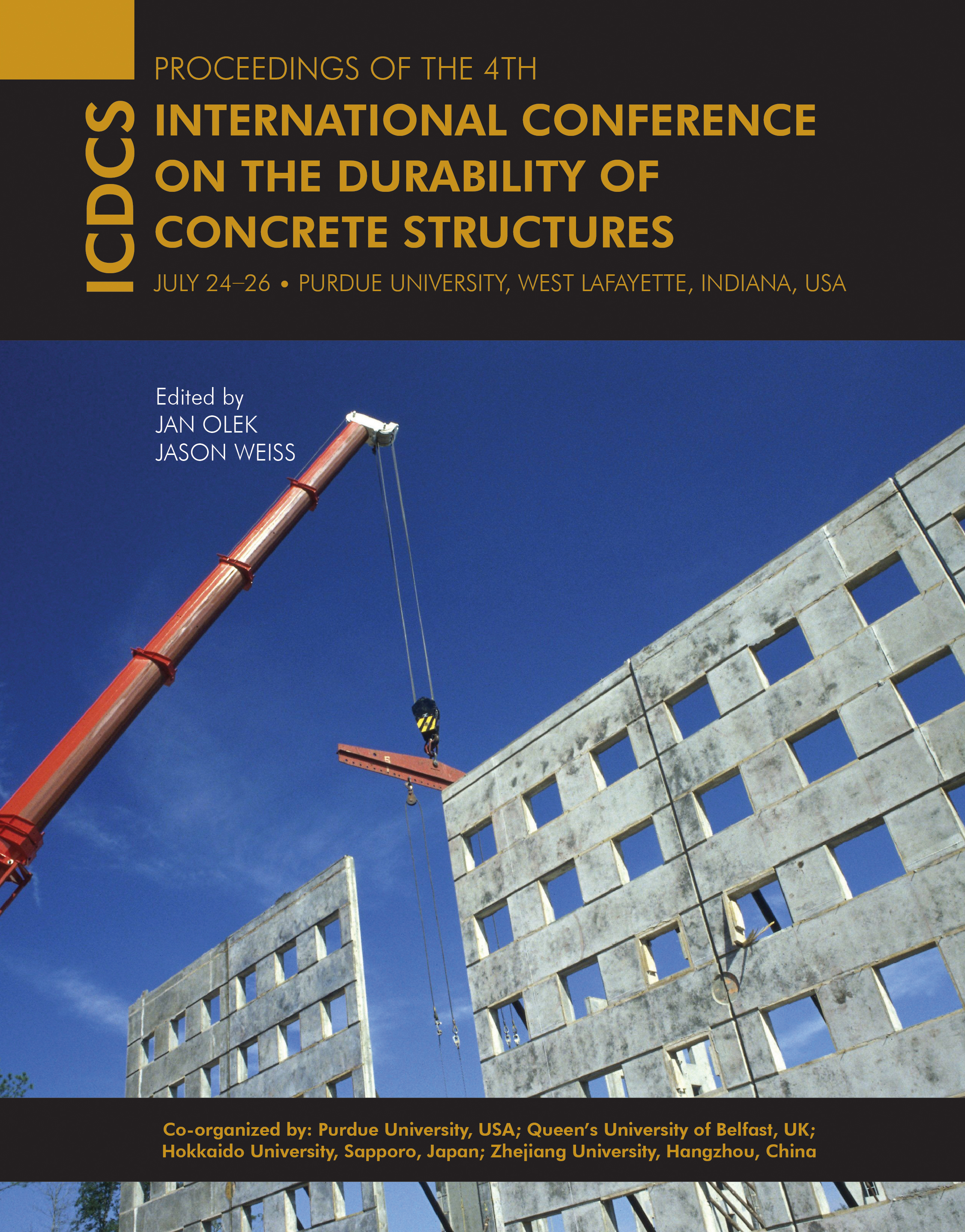Abstract
Chloride-induced corrosion of steel is one of the most commonly found problems affecting the durability of reinforced concrete structures in both marine environment and where de-icing salt is used in winter. As the significance of micro-cracks on chloride induced corrosion is not well documented, 24 reinforced concrete beams (4 different mixes - one containing Portland cement and another containing 35% ground granulated blastfurnace slag at 0.45 and 0.65 water-binder ratios) were subjected to three levels of sustained lateral loading (0%, 50% and 100% of the load that can induce 0.1 mm wide cracks on the tension surface of beam - F0.1) in this work. The beams were then subjected to weekly cycles of wetting with 10% NaCl solution for 1 day followed by 6 days of drying at 20 (±1) 0C up to an exposure period of 60 weeks. The progress of corrosion of steel was monitored using half-cell potential apparatus and linear polarisation resistance (LPR) test. These results have shown that macro-cracks (at load F0.1) and micro-cracks (at 50% of F0.1) greatly accelerated both the initiation and propagation stages of the corrosion of steel in the concrete beams. Lager crack widths for the F0.1 load cases caused higher corrosion rates initially, but after about 38 weeks of exposure, there was a decrease in the rate of corrosion. However, such trends could not be found in 50% F0.1 group of beams. The extent of chloride ingress also was influenced by the load level. These findings suggest that the effect of micro-cracking at lower loads are very important for deciding the service life of reinforced concrete structures in chloride exposure environments.
Date of Version
July 2014
DOI
10.5703/1288284315481
Recommended Citation
Wang, Junjie; Nanukuttan, Sreejith V.; Basheer, P. A. Muhammed; and Bai, Yun, "Influence of Micro and Macro Cracks Due to Sustained Loading on Chloride-Induced Corrosion of Reinforced Concrete Beams" (2014). International Conference on Durability of Concrete Structures. 12.
https://docs.lib.purdue.edu/icdcs/2014/corrosion/12
Included in
Influence of Micro and Macro Cracks Due to Sustained Loading on Chloride-Induced Corrosion of Reinforced Concrete Beams
Chloride-induced corrosion of steel is one of the most commonly found problems affecting the durability of reinforced concrete structures in both marine environment and where de-icing salt is used in winter. As the significance of micro-cracks on chloride induced corrosion is not well documented, 24 reinforced concrete beams (4 different mixes - one containing Portland cement and another containing 35% ground granulated blastfurnace slag at 0.45 and 0.65 water-binder ratios) were subjected to three levels of sustained lateral loading (0%, 50% and 100% of the load that can induce 0.1 mm wide cracks on the tension surface of beam - F0.1) in this work. The beams were then subjected to weekly cycles of wetting with 10% NaCl solution for 1 day followed by 6 days of drying at 20 (±1) 0C up to an exposure period of 60 weeks. The progress of corrosion of steel was monitored using half-cell potential apparatus and linear polarisation resistance (LPR) test. These results have shown that macro-cracks (at load F0.1) and micro-cracks (at 50% of F0.1) greatly accelerated both the initiation and propagation stages of the corrosion of steel in the concrete beams. Lager crack widths for the F0.1 load cases caused higher corrosion rates initially, but after about 38 weeks of exposure, there was a decrease in the rate of corrosion. However, such trends could not be found in 50% F0.1 group of beams. The extent of chloride ingress also was influenced by the load level. These findings suggest that the effect of micro-cracking at lower loads are very important for deciding the service life of reinforced concrete structures in chloride exposure environments.





